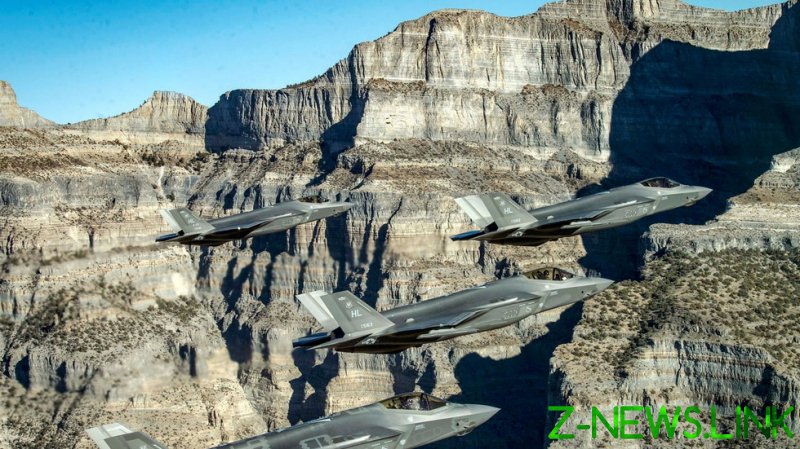
During a House Armed Services Committee hearing on Thursday, the F-35 program’s executive officer, Air Force Lieutenant General Eric Fick, said unexpected complications and budget cuts would delay the war plane’s transition from its current Lockheed Martin-designed logistics system, Autonomic Logistics Information System (ALIS), to the upgraded Operational Data Integrated Network (ODIN).
“Despite all the positive activities, we underestimated the complexity of deprecating ALIS capabilities while migrating to ODIN and learned several important lessons,” he said in written testimony, reported by Defense News, adding that the Pentagon will take a “strategic pause” in shifting to the new system, also citing a 42% reduction in research and development funds for 2021.
Fick acknowledged that in previous briefings to lawmakers on ODIN’s progress, he “committed to a very aggressive timeline,” but said it has since become clear those projections would not be possible to meet.
To date, ALIS alone has cost US taxpayers a total of around $1 billion, which would be added to another $471 million set aside for the transition to ODIN.
Beyond the logistics system, F-35 has encountered a seemingly endless series of problems, including underperforming gear, years-long development delays and expenditures that far exceed projections. Last week, the military announced a new tactical aviation study aiming for a “clean sheet design” for an entirely new aircraft, suggesting the Pentagon could start over from scratch after pouring hundreds of billions into the troublesome F-35 over nearly 20 years of development.
Though the plane’s developer, Lockheed Martin, originally promised a single, all-purpose platform that could replace all other aircraft in US service, the F-35 instead ended up split into three distinct variants, all of which have faced chronic performance issues and ever-increasing price tags. The Air Force has also changed its tune on the jet’s intended use, with Staff General Charles Brown telling reporters last week the F-35 is meant to be a “high-end” fighter, adding “We want to make sure we don’t use it all for the low-end fight.”
A Defense Department review conducted last year, moreover, identified nearly 900 outstanding software glitches in the plane’s systems, along with 13 other “must-fix” problems besetting the aircraft. Among the most pressing of those issues was a major defect with its 25mm autocannon, which still faces technical failures. Last month, a malfunction during a test flight nearly saw an F-35 shoot itself out of the sky, though its pilot was able to limp the jet back to its base uninjured.
While Fick stressed that reducing costs for the F-35 is his office’s “highest priority,” he was grilled on expenditures by lawmakers during Thursday’s committee hearing, where California Democrat John Garamendi voiced outrage over the program’s many setbacks
“I’m gonna take a deep breath and try to contain my anger about what is going on here. The F-35 is the most expensive program in the history of the Department of Defense, and the sustainment costs are expected to exceed $1.2 trillion over the life of the program,” he said, adding that the jet is “over budget, it fails to deliver on promised capabilities and its mission capability rates do not even begin to meet the service thresholds.”
It seems the case that [the defense industry’s] solution to many of these programs is simply to ask the taxpayers to throw money at the problem. That will not happen.
Garamendi was joined by Rep. Donald Norcross (D-New Jersey), chair of the Tactical Air and Land Forces and Readiness Subcommittee, who warned the government may “need to invest in other, more affordable programs” if the F-35 program continues to fail to rein in its costs.
While Fick spoke optimistically about the plane’s overall progress, with mounting complications, intense criticism from lawmakers and military plans to start fresh with a new jet, the F-35 faces an uncertain future as the Air Force’s top fighter.
Like this story? Share it with a friend!
© 2021, paradox. All rights reserved.





